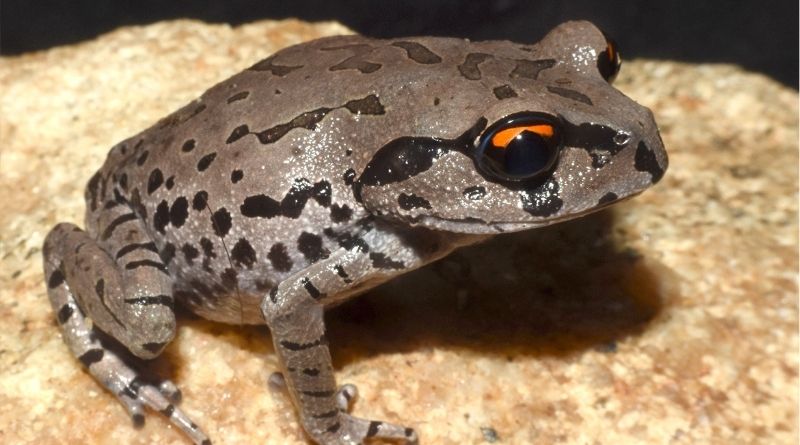New Species Of Frog Discovered In Assam’s Garbhanga Forest
In a remarkable find that blends science and sentiment, researchers have discovered a brand-new frog species nestled within the dense greens of Assam’s Garbhanga Reserve Forest. Named Leptobrachium aryatium, this striking amphibian instantly caught attention with its fiery orange-and-black eyes, intricately patterned throat, and the soft, rhythmic calls it makes as evening falls.
What sets this discovery apart isn’t just the frog’s appearance—but the heart behind its name.
A Scientific First, A Personal Tribute
Unlike many Latin names that feel distant or academic, Leptobrachium aryatium carries a local and emotional connection. It’s a tribute to Arya Vidyapeeth College in Guwahati, a respected educational institution that helped shape the lives of the frog’s discoverers.
All four scientists involved—Dr. Jayaditya Purkayastha, Dr. Dipankar Dutta, Dr. Jayanta Gogoi, and Dr. Saibal Sengupta—either studied or taught at Arya. For them, naming the species after their college wasn’t just a nod to tradition; it was a thank-you to the place that inspired their scientific journeys.
Garbhanga: The Forest That Keeps Giving
Garbhanga Reserve Forest, perched on the southwestern edge of Guwahati, has long been known for its rich biodiversity. It’s home not just to frogs, but also to elephants, rare butterflies, and endangered birds. Its thick canopy helps cool the city, regulate rainfall, and support groundwater systems. In short, it’s one of the region’s most important green lungs.
But this vital ecosystem is under growing threat. Rapid urbanisation, habitat loss, and unplanned development loom large—making the discovery of Leptobrachium aryatium both exciting and urgent. It’s a reminder that even in areas close to urban sprawl, nature still holds secrets waiting to be found.
Science Confirms: It’s One of a Kind
This isn’t just a local curiosity—it’s a scientifically validated discovery. The frog’s unique identity has been confirmed through detailed studies covering its physical features, vocal patterns, and DNA. Its description was peer-reviewed and officially published in Zootaxa, one of the world’s leading journals for species documentation (Vol. 5621, Issue 1, April 2025).
Researchers noted that Leptobrachium aryatium is clearly different from similar species like L. smithi and L. sylheticum. Its distinct eyes, throat patterns, and mating calls made that clear in the field. But lab work added further proof—genetic sequencing of its 16S rRNA gene and comparisons with tadpole morphology sealed the case.
Digging Deeper: A Closer Look at the Details
The Zootaxa report dives into the specifics: the frog’s tadpoles look different under the microscope, its toes have a unique webbing pattern, and its oral structures stand out when scanned using high-resolution imaging. Each of these findings points to a species that’s not just new to science—but long overlooked.
Image Credit: Dr. Jayaditya Purkayastha
